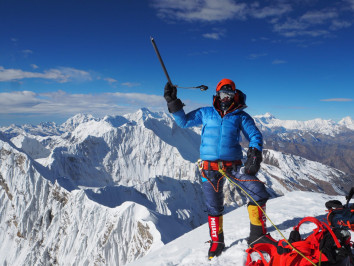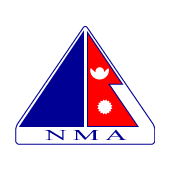Lobuche Peak Climbing – Complete Guide to Cost, Itinerary, Permit, Route & Season
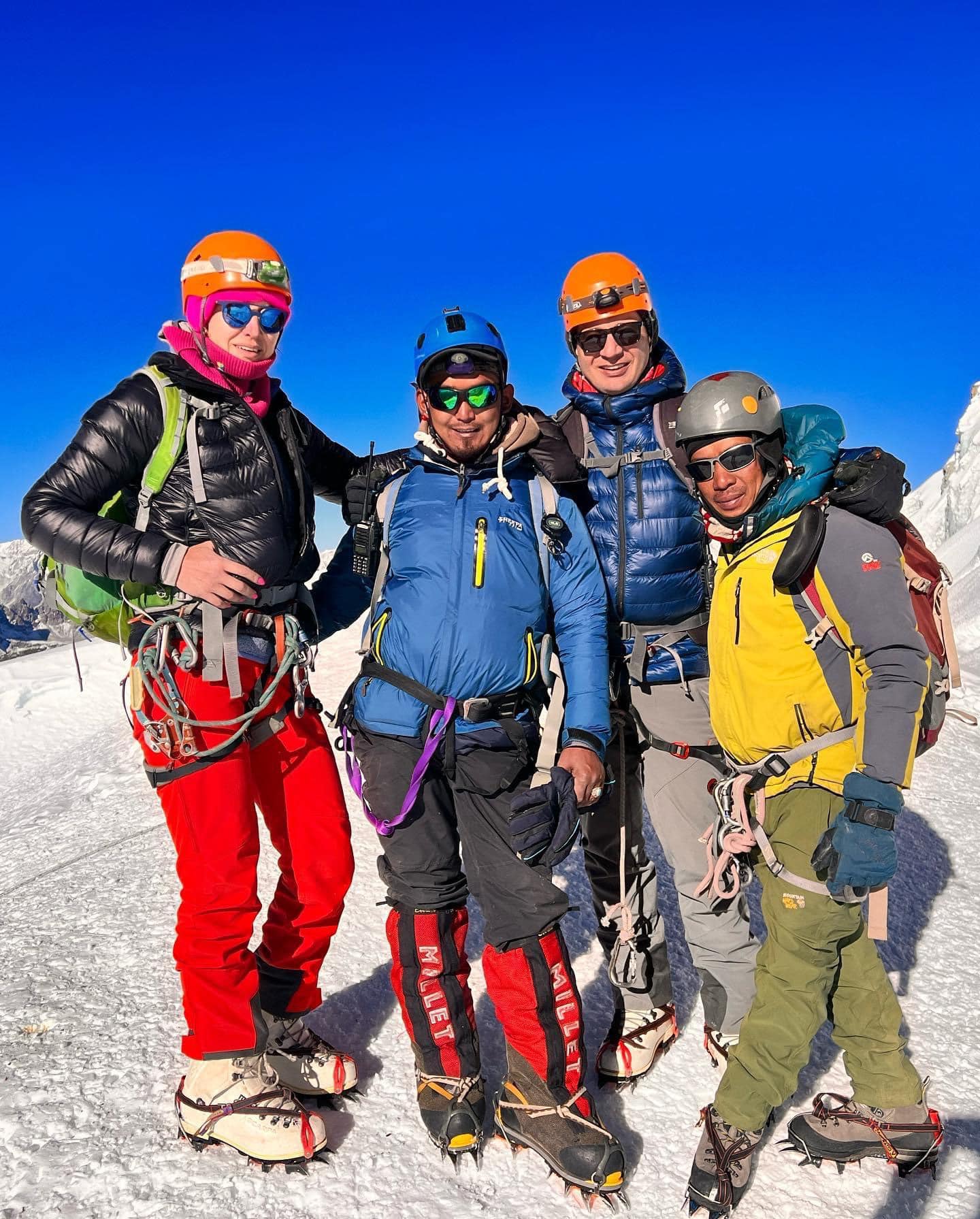
 Kedar Neupane
20th Nov, 2025
Kedar Neupane
20th Nov, 2025
Kedar Neupane
I am Kedar Neupane, a passionate traveler, entrepreneur, mentor, and social contributor, born and raised in a village near the Nepal-China border in Sindhupalchok, Nepal. With a Master’s degree in Business from Tribhuvan University and Level 2 proficiency in the German language, I have dedicated my life to tourism, trade, mentorship, and holistic well-being.
🌍 A Global Explorer with a Vision
Having explored 26+ countries, I have gained profound insights into diverse cultures, business landscapes, and global tourism. My travels have taken me to:
🇹🇭 Thailand | 🇧🇹 Bhutan | 🇲🇾 Malaysia | 🇸🇬 Singapore | 🇨🇳 China | 🇭🇰 Hong Kong | 🇩🇪 Germany | 🇵🇱 Poland | 🇦🇹 Austria | 🇨🇭 Switzerland | 🇭🇺 Hungary | 🇳🇱 Netherlands | 🇧🇪 Belgium | 🇫🇷 France | 🇦🇪 UAE | 🇬🇧 UK | 🇺🇸 USA | 🇹🇷 Turkey | 🇶🇦 Qatar | 🇮🇳 India | 🇮🇩 Indonesia | 🇨🇦 Canada
Through my journeys, I have developed a deep appreciation for cultural exchange, adventure tourism, and sustainable business practices.
🏔️ Entrepreneurial & Professional Journey
I am actively involved in tourism, trade, and mentorship, leading multiple ventures that promote sustainable travel, adventure tourism, and business development:
✔ Founder & MD – Actual Adventure Pvt. Ltd. (A leading adventure travel company in Nepal)
✔ CEO – Himalayas Destination Management Company (Creating premium travel experiences)
✔ MD – Nepal Export & Import Pvt. Ltd. (Promoting Nepalese products globally)
✔ MD – Actual Mentor Pvt. Ltd. (Empowering entrepreneurs and professionals)
✔ Chairman – World Expedition Nepal (Focusing on high-altitude expeditions and trekking)
Through my entrepreneurial journey, social contributions, global explorations, and commitment to lifelong learning, I strive to inspire others to pursue their passions while making a meaningful difference. My dream is to build a world where travel, business, and holistic well-being come together, fostering growth, sustainability, and happiness for all.
Lobuche Peak Climbing – Complete Guide to Cost, Itinerary, Permit, Route & Season
Lobuche Peak (6,119m) is one of Nepal’s most rewarding trekking peaks, located in the heart of the Everest region. It offers a perfect blend of trekking and mountaineering, with stunning views of Everest, Lhotse, Nuptse, Ama Dablam, Makalu, and Pumori. Lobuche East is the officially climbable trekking peak, while Lobuche West requires an expedition permit and advanced technical skills.
Table of Contents
Below is a comprehensive guide covering cost, itinerary, season, map, difficulty, route and comparisons with Island Peak, Mera Peak, and Everest Base Camp combinations.
Lobuche Peak Climbing — Complete Guide (2025/2026)
Overview
Lobuche Peak (Lobuche East, 6,119 m) is a popular trekking-peak in the Everest region. The climb merges classic Himalayan trekking with alpine climbing — fixed ropes, crampons and ice-axe work are part of the summit push. Lobuche West (6,145 m) is more technical and requires an expedition permit.
Common trip combinations include: Everest Base Camp + Lobuche Peak, Island Peak + Lobuche Peak, and multi-peak challenges involving Mera Peak. Lobuche is also a great training climb for higher technical expeditions.
Cost & Pricing
| Category | Price | Inclusions / Details |
|---|---|---|
| Foreign Climbers — Standard | USD 1,800 – USD 2,500 per person | Guide + climbing Sherpa Round-trip Lukla flights Permits, meals & lodges High-camp tents & group climbing gear |
| Foreign Climbers — Premium | USD 2,600 – USD 3,200 per person | Private guide & porter Personal gear rental Higher-grade meals & accommodation |
| Nepali Citizens | NPR 75,000 – NPR 120,000 | Lower permit fees and local rates reduce the overall cost for Nepali climbers. |
Costs vary by season, services, group size and whether you are a Nepali citizen. Below are typical package prices (2025/2026 estimates).
What's usually included
- Kathmandu–Lukla–Kathmandu domestic flights
- All meals during trek and climb
- Guide, climbing Sherpa, and porter support
- Group climbing ropes, tents, stoves
- Permit processing & local agency fees
Add-ons (optional)
- Personal climbing gear rental
- Private Sherpa (1:1)
- Satellite phone / Personal oxygen
- Insurance & evacuation guarantees
Permits & Regulations
Lobuche East is a listed trekking peak under the Nepal Mountaineering Association (NMA). Lobuche West is treated as an expedition peak and needs a different permit type.
| Permit | Typical Fee (est.) | Notes |
|---|---|---|
| Lobuche East (NMA trekking peak) | USD 125 – 250 (seasonal) | Higher fee in spring; agency processing fees may apply |
| Lobuche West (Expedition) | Expedition permit (higher) | Technical peak & additional liaison required |
| Sagarmatha National Park entry | USD ~30 | Paid at Monjo or entry gate |
| TIMS / Local taxes | Varies | Sometimes included by operator |
Note: Permit fees change; your operator will confirm actual charges during booking. Nepali citizens have lower permit and park fees.
Lobuche Peak Climbing in Nepal
Lobuche Peak Climbing is one of the most popular Himalayan climbing adventures in Nepal, located in the heart of the Everest region. It appeals to both trekking enthusiasts and beginner mountaineers because the climb combines the cultural experience of the Everest Base Camp trail with the excitement of a true alpine ascent. The journey begins from Lukla and follows the legendary Sherpa villages of Namche, Tengboche, and Dingboche before reaching Lobuche Village. Climbers enjoy easy access, excellent acclimatization, and breathtaking views of Everest, Lhotse, Nuptse, and Ama Dablam throughout the trek. Lobuche is particularly popular because it is suitable for first-time climbers, offers a safe altitude profile, and provides an ideal training ground for major expeditions like Mount Everest and Ama Dablam. The climb beautifully merges Nepal’s mountain culture with high-altitude adventure, making it one of the most rewarding 6,000-meter peaks in the Himalayas.
Lobuche Peak Climbing Permit
Lobuche Peak climbing requires an official permit issued by the Nepal Mountaineering Association (NMA). The permit fees vary according to the season. For Lobuche East Peak, the cost is USD 250 in Spring (March–May), USD 125 in Autumn (September–November), and USD 70 during Winter and Summer (December–February / June–August). These fees cover the right to climb the mountain, but climbers must also be accompanied by a licensed climbing guide as per Nepal’s regulations. It is important to note that Lobuche West Peak is not classified as a trekking peak— it requires a full expedition permit, which is significantly more expensive and involves a more complex climbing structure.
Lobuche Peak Climbing Season – Best Time to Climb
The best seasons for Lobuche Peak Climbing are Spring (March–May) and Autumn (September–November). During spring, climbers enjoy stable weather, longer days, and high-quality snow conditions, making it the most popular period for mountaineering in Nepal. Autumn brings crystal-clear skies, excellent visibility, and comfortable temperatures. Winter climbing is possible but challenging due to extremely cold temperatures and strong winds. Monsoon season is not recommended because of heavy rainfall, poor visibility, and difficult trail conditions. For safety, comfort, and the highest summit success rate, spring and autumn are the ideal seasons to attempt Lobuche Peak.
Lobuche Peak Climbing Map
A typical Lobuche Peak climbing map illustrates the route beginning in Kathmandu and flying to Lukla. The trekking trail continues through Phakding, Namche Bazaar, Tengboche, Dingboche, and Lobuche Village—following the classic Everest Base Camp route. From Lobuche Village, the climbing route splits off toward Lobuche Base Camp (5,030 m), then ascends to Lobuche High Camp (5,600 m). The final section shows the snow-covered ridge that leads to the summit of Lobuche East at 6,119 m. The map highlights major altitude points, acclimatization stops, and the steep ascent line used on summit day. A custom-designed digital map can be prepared upon request.
Lobuche Peak Climbing Route
The Lobuche Peak climbing route is divided into two sections—trekking and climbing.
The trekking route follows the classic Everest Base Camp trail: Lukla → Phakding → Namche → Tengboche → Dingboche → Lobuche Village → Base Camp. This part offers excellent acclimatization and spectacular Himalayan scenery.
The climbing route begins from Base Camp, moving to High Camp and finally pushing toward the summit. The ascent involves steep snow slopes ranging from 45° to 60°, sections of fixed ropes, crampon and ice-axe use, and some rocky scrambling near the summit ridge. The route is safe and well-equipped during the main climbing seasons, making it suitable for physically fit trekkers with basic mountaineering experience.
Lobuche Peak Climbing Difficulty
Lobuche Peak is graded as Moderate to Challenging. Although not extremely technical, the climb requires good physical fitness, previous trekking experience, and familiarity with basic mountaineering techniques. Climbers must be prepared for steep snowy slopes, high altitude (above 6,000 meters), cold conditions, and exposure along the summit ridge. Knowing how to use an ice axe, crampons, and fixed ropes greatly increases safety and comfort. With proper acclimatization and guidance, Lobuche Peak is achievable for motivated beginners and an excellent introduction to Himalayan climbing.
Mera, Island and Lobuche Peak Climbing
Many climbers choose to attempt Mera Peak, Island Peak, and Lobuche Peak together as a three-summit Himalayan challenge. Each peak offers a different climbing experience.
-
Mera Peak (6,476 m): Highest of the three but the least technical, known for its long glacier walk.
-
Island Peak (6,189 m): More technical with a steep ice headwall and crevasses.
-
Lobuche Peak (6,119 m): Steepest ascent, closest to Everest, and great for alpine training.
A combined Mera–Island–Lobuche itinerary generally takes 25–35 days and is ideal for climbers preparing for future climbs like Ama Dablam, Manaslu, or Mount Everest.
Everest Base Camp with Lobuche Peak Climbing
Combining the Everest Base Camp trek with Lobuche Peak climbing is one of the best ways to acclimatize before attempting a 6,000-meter summit. The trek follows the classic EBC trail, allowing climbers to visit Everest Base Camp and Kala Patthar before moving toward Lobuche for the climbing section. This natural altitude progression increases summit success rates and provides an unforgettable Himalayan journey. The combination is perfect for adventure seekers and for climbers training for future high-altitude expeditions. A full EBC + Lobuche package typically takes 16–18 days.
Short Lobuche Peak Climbing (Fast Track)
Short Lobuche Peak Climbing is designed for experienced trekkers and climbers who already have strong acclimatization or recent high-altitude exposure. This fast-track 10-day itinerary begins with a flight to Lukla and continues quickly toward Lobuche with minimal rest days. After reaching High Camp, climbers push for the summit and descend rapidly back to Lukla. This option demands excellent physical fitness, solid mountaineering skills, and confidence at altitude. It is a challenging but rewarding alternative for those with limited time.
Island Peak and Lobuche Peak Climbing
Island Peak and Lobuche Peak are two of Nepal’s most popular trekking peaks, and many climbers choose to summit both in a single expedition. The combined climb takes around 18–20 days, beginning with the Everest Base Camp trail and branching to Island Peak before heading toward Lobuche. Island Peak offers more technical glacier and ice climbing, while Lobuche Peak presents steep slopes and a dramatic summit ridge. Together, these climbs create an excellent progression for those planning to attempt Ama Dablam, Lhotse, or Everest in the future.
Best Time for Lobuche Peak Climbing
The best time for Lobuche Peak Climbing is during the spring (March–May) and autumn (October–November) seasons. These months offer stable weather, favorable climbing conditions, and clear mountain views. Spring is known for its perfect snow quality and warmer climbing temperatures, while autumn brings crisp, clear skies and excellent visibility. Mid-winter and the monsoon season should be avoided due to extreme cold, heavy snowfall, storms, and poor trail conditions.
Lobuche East Peak Climbing classified as a trekking peak
Lobuche East Peak is the standard and more popular version of Lobuche, often classified as a trekking peak due to its accessibility. Standing at 6,119 meters, it offers a thrilling and achievable mountaineering challenge for beginners and intermediate climbers. Permits are issued by the Nepal Mountaineering Association, and the route is well-established during the climbing seasons. Because of its relatively easy access and high success rate, Lobuche East is considered one of the best introductory Himalayan climbing experiences.
Lobuche West Peak Climbing expedition peak. At 6,145 meters
Lobuche West Peak is a much more demanding climb and is classified as a full expedition peak. At 6,145 meters, it features steep ice, snow, and mixed terrain, making it significantly more technical than Lobuche East. The peak requires a government expedition permit, larger logistics, and a highly experienced climbing team. Very few climbers attempt Lobuche West compared to Lobuche East, but it is an excellent challenge for those looking to build technical alpine skills or prepare for major Himalayan expeditions such as Everest, Lhotse, or Nuptse.
Best Season & Weather
Best months: March – May (spring), and September – November (autumn). These windows have the most stable weather, clearer skies and safer climbing conditions.
Monsoon (Jun – Aug): Not recommended due to heavy snowfall at altitude and unpredictable weather on the summit ridge.
Winter: Possible for very experienced teams with winter equipment, but temperatures and wind make summit pushes risky.
Suggested Itineraries
| Day | Itinerary | Altitude |
|---|---|---|
| Day 1 | Fly Kathmandu → Lukla, trek to Phakding | 2,650 m |
| Day 2 | Trek to Namche Bazaar | 3,440 m |
| Day 3 | Acclimatization — Everest View Point, explore local markets | 3,440 m |
| Day 4 | Trek to Tengboche | 3,860 m |
| Day 5 | Trek to Dingboche | 4,410 m |
| Day 6 | Acclimatization — hike to Nangkartsang Peak / local hikes | 4,410 m |
| Day 7 | Trek to Lobuche Village | 4,940 m |
| Day 8 | Trek to Lobuche Base Camp — camp & gear preparation | 5,030 m |
| Day 9 | Move to High Camp — rope & technical briefing | 5,600 m |
| Day 10 | Summit Day — Lobuche East (6,119 m) and return to Base Camp | 6,119 m |
| Day 11 | Trek to Pangboche | 3,930 m |
| Day 12 | Trek to Namche Bazaar | 3,440 m |
| Day 13 | Trek to Lukla | 2,860 m |
| Day 14 | Fly Lukla → Kathmandu | 1,400 m |
Standard: 14-Day Lobuche Peak (EBC combination)
Requires very strong fitness and prior altitude experience. Minimal acclimatization days and early summit push.
Island Peak & Lobuche Combined: 18–22 Days
Often scheduled as Island Peak first (South), followed by Lobuche or vice versa. Extra acclimatization and logistics required.
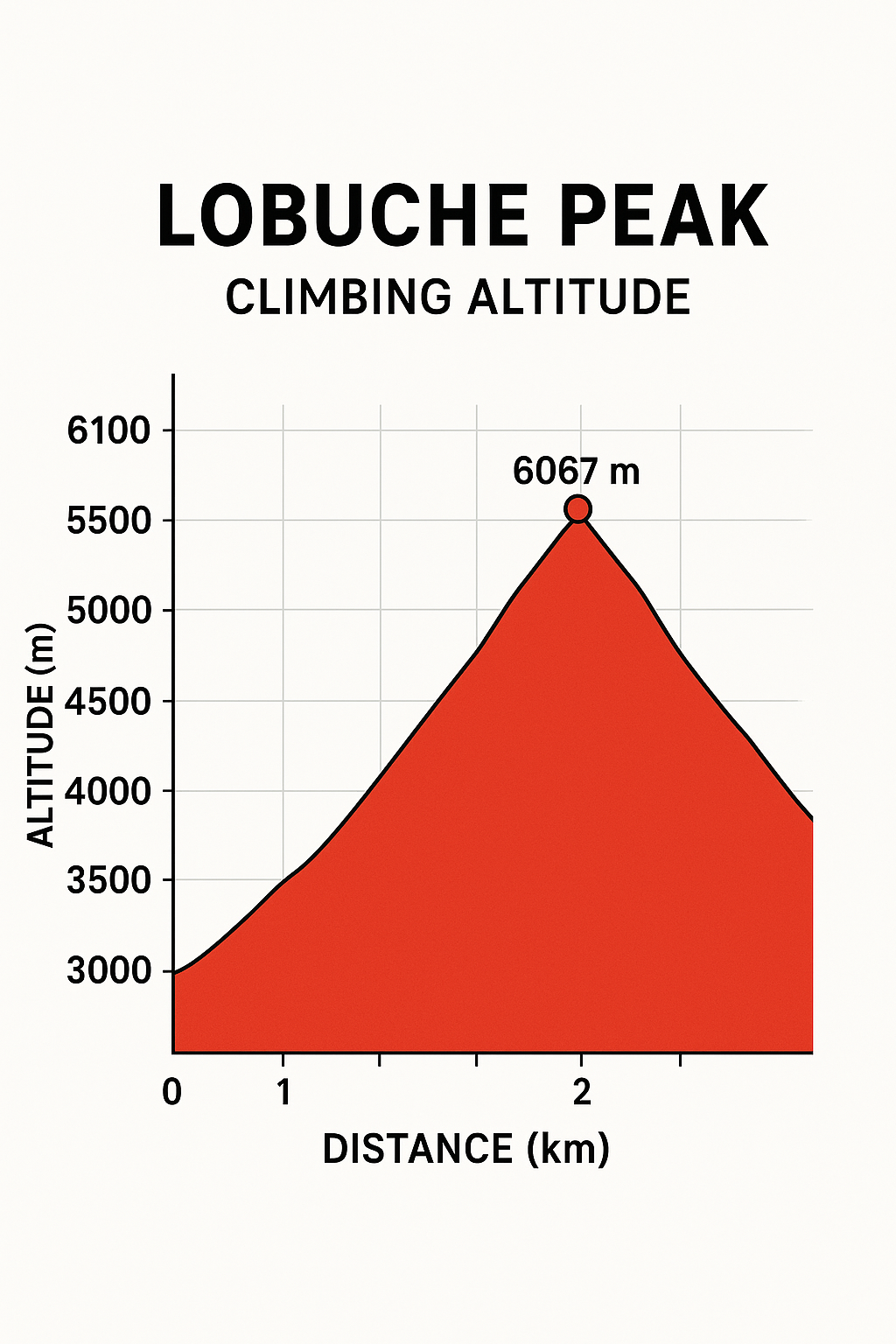 Route & Map
Route & Map
The approach uses the classic Everest Base Camp trekking route. Key points: Lukla > Namche > Tengboche > Dingboche > Lobuche Village > Lobuche Base Camp > Lobuche High Camp > Summit.
High Camp altitude: approx. 5,600 m. Base Camp: ~5,030 m.
Climbing Route (Technical Details)
The final climb from High Camp to the summit involves steep snow slopes, sections of fixed rope, and short exposed ridges. Typical gradient on the summit ridge can reach 45° in places. Climbers must be comfortable with cramponing, front-pointing, and using jumar/ascender techniques if required.
Gear & Technical Requirements
- Crampons & front-pointing skills
- Ice-axe (technical) & self-arrest skills
- Harness, carabiners, slings, ascender/descender
- Cold-weather high-altitude clothing & boots
- Optional: Personal oxygen (rarely used for Lobuche)
Difficulty & Who Should Attempt It
Lobuche East is moderate to challenging. You should have:
- Prior trekking experience above 5,000 m (recommended)
- Basic ice and crampon skills or willingness to train
- Good cardiovascular fitness and acclimatization discipline
Lobuche West is technical and recommended only for teams with rock/ice mixed climbing experience and expedition infrastructure.
FAQ
How long is the trip?
Standard EBC + Lobuche packages are 14–18 days. Short fast-track versions exist (10 days) for experienced climbers.
How much does a Nepali climber pay?
Typical Nepali price range: NPR 75,000 – NPR 120,000 depending on services and whether Lukla flight is used.
Do I need prior climbing experience?
Basic mountaineering training is recommended. Operators provide crampon practice and rope techniques before the summit push.
Is Lobuche safe?
With a qualified guide, proper acclimatization and good weather, Lobuche is relatively safe compared to major expeditions. Risks include altitude sickness, avalanches in bad weather, and falls on steep snow slopes.
Can I combine Lobuche with Island Peak or Mera Peak?
Yes. Combination itineraries are popular but require 18–35 days depending on peaks chosen.
Quick Facts
- Peak: Lobuche East — 6,119 m
- High Camp: ~5,600 m
- Base Camp: ~5,030 m
- Best time: Mar-May & Sep-Nov
- Typical duration: 10–18 days
Need a Map?
I can generate a printable route map or SVG for your website. Ask me to include GPS waypoints.
Get MapContact & Booking Form
Name Email Preferred Dates Message
Actual Adventure Pvt. Ltd. — Lobuche Peak climbing packages, permits and local logistics. Use this HTML as a ready-to-publish page on your website. Modify prices, images and contact links to match your brand.
© 2025 Actual Adventure. All rights reserved.Recent Posts

18th Nov, 2025

14th Nov, 2025
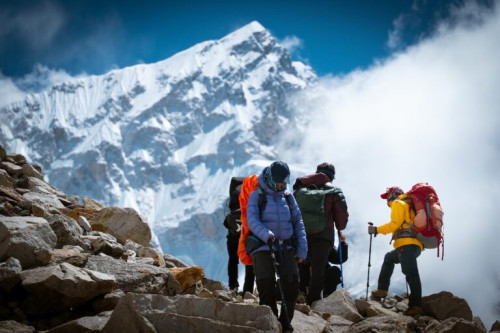
12th Nov, 2025
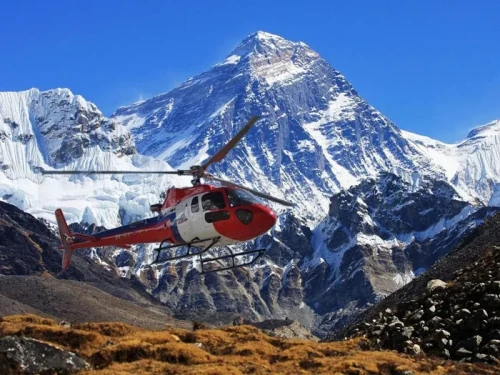
28th Oct, 2025

19th Oct, 2025

18th Oct, 2025

14th Oct, 2025

14th Oct, 2025
